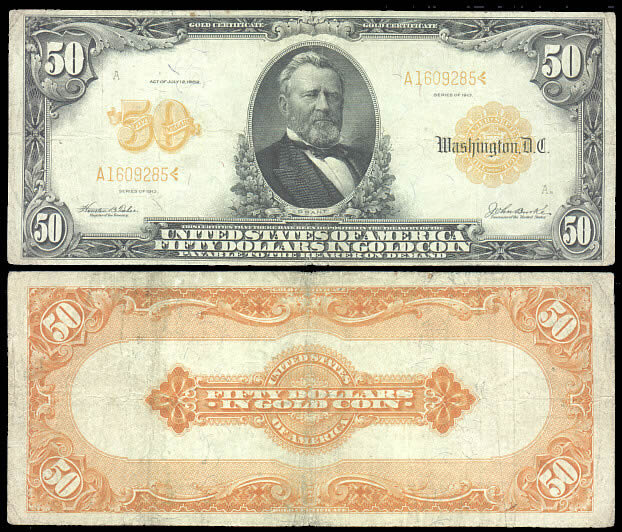Results 1 to 1 of 1
Thread Information
Users Browsing this Thread
There are currently 1 users browsing this thread. (0 members and 1 guests)
-
04-26-2011, 10:44 PM #1Senior Member


- Join Date
- May 2007
- Location
- South West Florida (Behind friendly lines but still in Occupied Territory)
- Posts
- 117,696
The Federal Reserve Note is Dead, Long Live the U.S. Dollar
The Federal Reserve Note is Dead, Long Live the U.S. Dollar
Currencies / US Dollar
Apr 26, 2011 - 05:58 AM
By: Jeff_Berwick
In 1520, Count Hieronymus Schlick of Bohemia began minting silver coins known as Joachimsthalers, named for Joachimstal (today called Jáchymov in the Czech Republic), where the silver was mined. In German, thal or tal refers to a valley or dale. Therefore, translated, the coins meant "Jachymov Valley". His "Joachimsthaler" was later shortened in common usage to taler or thaler and this shortened word eventually found its way into English as dollar.
The coins minted at Joachimsthal soon lent their name to other coins of similar size and weight from other places. The Dutch lion dollar, carried by Dutch traders was popular in the Dutch East Indies as well as in the Dutch New Netherland Colony (New York) and the Thirteen Colonies as well as circulating throughout the Middle East in the 17th and 18th centuries.
By the mid-18th century, the lion dollar had been replaced by the Spanish "pieces of eight" which were distributed widely in the Spanish colonies in the New World and in the Philippines. Pieces of eight (so-called because they were worth eight "reals" - eight reals = 1 silver peso) became known as Spanish dollars in the English-speaking world because of their similarity in size and weight to the earlier Thaler coins.
The Americans took the dollar sign ($) from the pieces of eight, as well (see image here). http://www.dollarvigilante.com/display/ ... 1760551208 There is no agreed upon date or place from whence the dollar sign came but the most commonly held theory is that it derives from the Spanish coat of arms engraved on the Spanish colonial silver coins, the "Real de a ocho" or Spanish dollars that were in circulation in the Spanish colonies in America and Asia. The Spanish dollars were also legal tender in the English colonies in North America, which later became part of the U.S. and Canada.
US Gold Certificate

US dollars were backed by gold and known as gold certificates from 1882-1933. Dollars backed by silver lasted longer, known as silver certificates, and were in circulation from 1878 to 1964.
However, both have been usurped by the Federal Reserve Note. A completely fiat, non-free market currency. A currency in which, âThis Note is Legal Tender for All Debts, Public and PrivateâJoin our efforts to Secure America's Borders and End Illegal Immigration by Joining ALIPAC's E-Mail Alerts network (CLICK HERE)


 LinkBack URL
LinkBack URL About LinkBacks
About LinkBacks




 Reply With Quote
Reply With Quote

72 Hours Till Deadline: Durbin moves on Amnesty
04-28-2024, 02:18 PM in illegal immigration Announcements